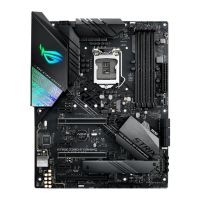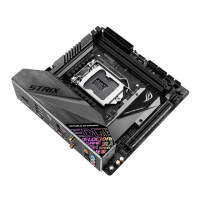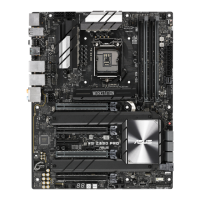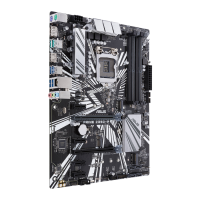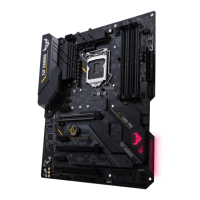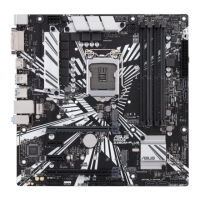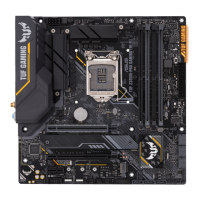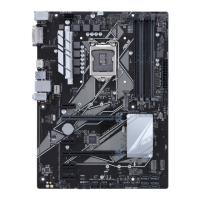Do you have a question about the Asus Z390 Series and is the answer not in the manual?
Step-by-step guide for installing the Armoury Crate application from the Microsoft Store.
Explains the Highlights section of Armoury Crate for news and events.
Details how to use the Tools section to download drivers and utilities.
Information about logging into your ASUS account and managing profiles.
Displays user activities and guides for registering ASUS products.
Shows where to check personal messages and event information from ASUS.
Overview of integrated utilities for system optimization and performance tuning.
Step-by-step guide to intelligently overclock your CPU using the AI Overclocking feature.
Fine-tunes voltages, monitors system stats, and adjusts overclocking.
Customizes system performance for individual applications.
Enables system-wide power-saving and optimizes consumption.
Provides customizable fan settings for optimal cooling and quiet operation.
Features digital VRM and DRAM voltage controllers for precise tuning.
Utility to scan and delete system junk files to free up disk space.
Allows automatic updates for motherboard software, drivers, and BIOS.
Utility to get detailed information about motherboard, CPU, and memory settings.
Utility to check and save the latest BIOS version to a USB storage device.
Displays current profile, network preference settings, and network speed.
Monitors network traffic and switches between different mode settings.
How to categorize applications into different groups for network bandwidth control.
Displays detailed network usage, top applications, and bandwidth consumption.
Displays network traffic for each channel to help select a smooth path.
Displays information about physical network cards like IP address and MAC address.
Discover and match ROG routers to turn on QoS feature for ultra-fast gaming.
Features for customizing the LiveDash OLED panel, including hardware monitoring and visuals.
Configures the active states for the LiveDash OLED display.
Features for customizing the AIO cooler's OLED panel, including hardware monitoring and audio visualization.
Steps to validate and save memory timing settings online using your ASUS account.
Steps to manually validate and save memory timing settings via a validation file.
Explains how to create RAMCache using both Advanced and Smart modes for disk performance.
Monitors system DIMM information and configuration details.
Checks the health status of DIMM resources used for caching.
Gathers and displays detailed system information in an ROG custom layout.
Accesses audio effects and profiles for basic audio customization.
Allows detailed adjustment of applications and audio output devices.
Customizes audio settings using a 10-band equalizer.
Provides microphone effects for voice enhancement during streaming or recording.
Manages saving/loading settings, language, and version information.
Tests Sonic Radar overlays using audio player test sounds.
Customizes the appearance and position of HUD elements.
Manages application overlays and compatibility.
Configures hotkeys for quick access to Sonic Radar III features.
Adjusts the visual appearance of the overlay.
Adjusts settings related to the audio content of applications.
Displays version, legal info, language selection, and HUD function details.
Guide to using AI overclocking for performance enhancement.
Explains how the auto-tuner assesses CPU silicon quality and cooling for optimization.
Detailed steps for initiating overclocking through the UEFI BIOS.
A comparison between AI overclocking and manual overclocking methods.
| Chipset | Intel Z390 |
|---|---|
| CPU Socket | LGA 1151 |
| Memory Type | DDR4 |
| Form Factor | ATX |
| Multi-GPU Support | NVIDIA 2-Way SLI, AMD 3-Way CrossFireX (varies by model) |
| USB Ports | USB 3.1 Gen 2, USB 3.1 Gen 1, USB 2.0 (varies by model) |
| SATA Ports | 6 x SATA 6Gb/s |
| Audio | Realtek ALC1220 or similar (varies by model) |
| Memory Slots | 4 x DIMM |
| LAN | Intel I219-V or similar |
| PCIe Slots | Varies by model (PCIe 3.0 x16, PCIe 3.0 x1) |

